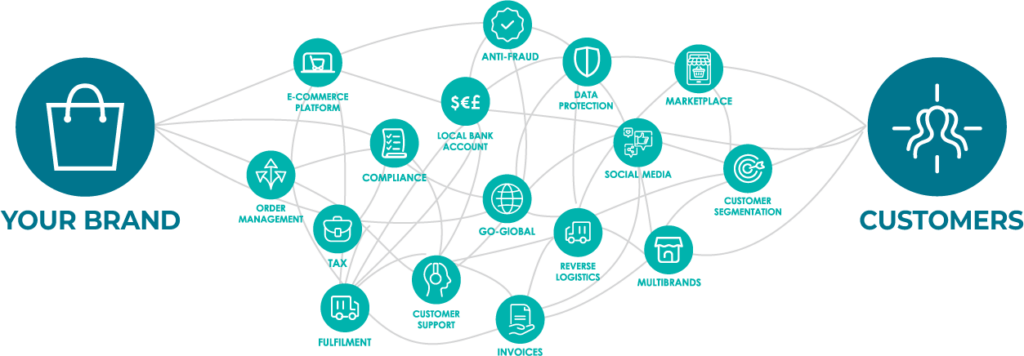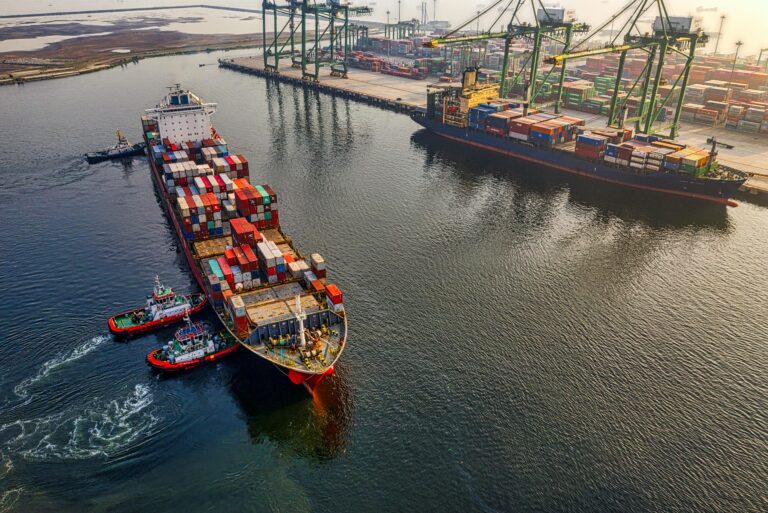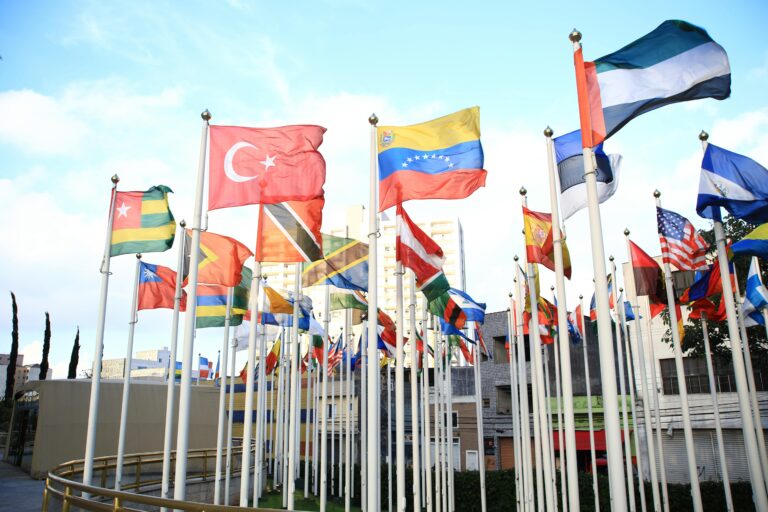To fully compete in today’s global ecommerce marketplace, brands with DTC channels can no longer be content to sell domestically. As competition increases and opportunities grow, it is imperative that brands enter new markets and enter them quickly. Achieving accelerated speed-to-market is difficult and costly to do in-house. But engaging the right vendor allows brands to open up shop in new markets by the 2023 holiday shopping season.
As domestic online markets become increasingly saturated, more and more brands are entering new global markets as a way to grow, stay competitive and maintain the ecommerce revenue generated during pandemic lockdowns. So many, in fact, that according to findings from Statista, the cross-border ecommerce market is expected to reach a value of US$2.25 trillion by 2026.
What Are the Benefits of International Ecommerce?
The main advantage of cross-border and global ecommerce is that it allows brands to grow and gain exposure to new markets and customers worldwide. Of course, successfully expanding into new global markets with a DTC channel can also dramatically increase revenue and overall earnings, especially during the lucrative holiday selling season. Benefits of cross-border ecommerce include:
- Increased sales and revenue
- Expanded market reach
- Wider brand recognition and visibility
- Year-round demand
- Stronger competitive advantage
- Expanded customer base
- Better business sustainability
What Brands Need to Do to Successfully Enter New Global Markets

While cross-border and global ecommerce is on many brands’ roadmaps, successfully entering foreign markets is no easy feat, especially for brands who want to get there fast. Cross-border ecommerce is so complex that it’s nearly impossible to go it alone. Understanding the many financial rules and regulations of each country they want to sell in can be beyond the scope of brand management expertise.
Fully understanding and being compliant with the financial aspects of cross-border selling is a complex and time-consuming process that greatly compromises speed-to-market. Brands wanting to enter the international marketplace in time for the holiday shopping season need to start early. Even with a timely start and talented in-house staff, without help from qualified ecommerce experts, it can be a year or more before they are ready for cross-border selling.
To expedite the process and protect against compliance violations, brands with DTC channels must work with an entity with proven expertise in handling complex financial issues like payment processing, tax collection and remittance, compliance with local regulations and fraud mitigation. To that end, partnering with an experienced Merchant of Record (MOR) is an essential first step for brands with ecommerce channels looking to enter international markets.
Let’s take a deep dive into what a Merchant of Record does and how they can help accelerate entry into international markets.
How a Merchant of Record Benefits Growing Brands
Engaging a Merchant of Record vendor increases speed-to-market because that MOR is typically established in the market already and has existing, vetted business relationships. Partnering with an MOR simplifies and accelerates a brand’s ability to reach new markets. They are essential for businesses looking to expand internationally but have yet to establish a localised presence in the new market. As the MOR takes on the complexities of selling globally, brands can focus on core business competencies without worrying about financial and legal responsibilities. Additionally, partnering with an MOR offers a cost-efficient alternative to hiring and managing local accountants or lawyers or opening offices in foreign countries.
MORs help increase conversion rates through localised payment methods and currencies and optimise revenue using payment processing expertise. Brands with ecommerce channels can also offer better customer service due to the MOR’s experience in settling customer complaints or disputes quickly and accurately. This helps ensure that customers have access to accurate information about their purchase history and any refunds or credits they may be entitled to.
What Is a Merchant of Record?

A Merchant of Record (MOR) is a legal entity or organisation that acts as a reseller between the seller and the end customer in an ecommerce transaction. The MOR handles all online payments and takes on all associated financial liabilities related to a purchase. In international ecommerce, the MOR is fiscally and legally responsible for cross-border sales to global end consumers.
Simply put, MORs simplify financial operations. They relieve brands of the burden of processing payments. In return, brands can be confident they are operating in accordance with the laws and regulations of the foreign markets they do business in.
Here are some of the financial responsibilities that the MOR takes care of:
- Payment and billing options
- Collecting sales tax
- Managing fraud risks
- Opening and managing the brand’s value-added tax (VAT) position
- Country-specific bureaucratic requirements
- Customs-related costs and their respective variables
- Payment Card Industry Data Security Standard (PCI-DSS) compliance
Partnering with an MOR relieves brands from dealing with tax and compliance issues involved with international payments and business operations. MORs have an intimate knowledge of all local and international jurisdictions’ financial and legal compliance rules. It is also their responsibility to stay current on international sales tax and tax calculation issues and changes. An MOR minimises legal risk by ensuring regulatory and tax compliance in all locales.
Additionally, since they provide more efficient processing services, the MOR can reduce transaction fees associated with credit card purchases. They also stay up-to-date on international transaction laws, handle chargebacks and refunds and are responsible for creating local entities in the foreign markets a brand seeks to enter.
More Localisation Leads to More Sales in New Global Markets
Understanding international finances is not the only hurdle facing brands with DTC ecommerce channels attempting to enter new global markets. They must also localise their online presence and marketing strategies to the languages and cultures of every new global market they enter. The ultimate goal of localisation is to provide consumers in foreign markets with a domestic-equivalent online shopping experience.
Localisation is the best way to ensure a brand’s online presence and marketing feel native to new audiences. But localisation is more than simply translating website content to local languages. True localisation adapts everything: images, colours, layout, currency, visuals, measurement units, models, customer service and more. It also encompasses marketing strategies like ads, emails, product descriptions, promotional videos and social media.
As with the legal and financial requirements, brands needing speed-to-market can achieve it by engaging the right vendor. Such partners are experts in creating domestic-equivalent experiences that customers want.
ESW Accelerates Entry to New Global Markets
Dealing with international finances, full localisation can be a complicated process. It is especially complex for brands that elect to do it themselves. However, partnering with an MOR, like ESW, eases and accelerates the process. We have a proven track record of helping the world’s best-loved brands launch DTC channels in new markets in a matter of weeks and not months.
Additionally, as an MOR, ESW takes full responsibility for all fraud risks and any resulting chargebacks on any transaction. We handle all the financial complexities of entering foreign markets so you don’t have to.
Contact ESW to learn how we can help your brand compete in new global markets just in time for the holidays.





